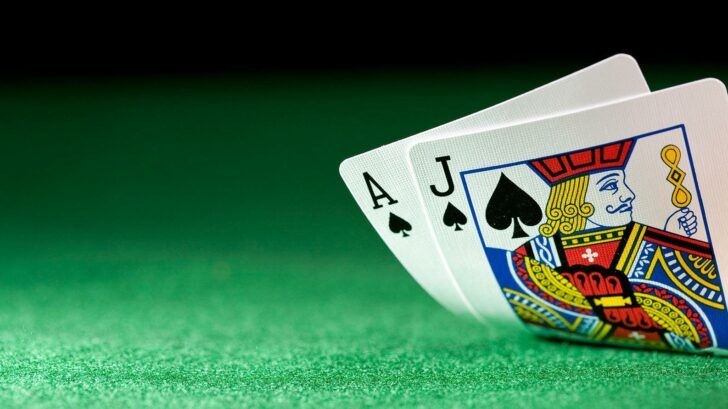4 Simple Rules to Learning Basic Blackjack Strategy in 30 Minutes or Less

While advantage play is important for becoming a blackjack pro, the first step is learning basic blackjack strategy. We’ve come up with a list of easy-to-learn rules.
This website runs a lot of articles written for intermediate to proficient blackjack players. Mostly for guys who already know how to play blackjack but want to take their games to the upper echelon. That’s why we cover a lot of advantage play techniques like card counting and calculating house edge.
But all of that means little to the beginning player who is just learning basic blackjack strategy. For that reason, we’ve decided to get back to the basics. Here are four simple rules any blackjack newbie can follow to improve their game (Hint: before we continue, remember that a “soft” hand contains an ace, and a “hard” hand doesn’t).
When the dealer has a seven upcard, hit until you have a hardcount of 17 or higher
Reading blackjack signals like the dealer’s upcard correctly is fairly complicated. Luckily for you, we’ve broke the process down into simple rules. The dealer showing a seven means that you should hit until your chance of busting becomes too high, i.e. when you have a hard 17 or higher.
That is because a dealer upcard of seven means they have a low chance of busting. If they have a face card under that seven, then they will stand. If they have a 2-6, they have a good chance of drawing another card without busting.
Only a 7-9 means the dealer has a high chance of busting, so you need to take a risk on hitting in order the win the majority of hands. Of course, if your hand is soft, keep hitting in any case.
When the dealer’s upcard is six or lower, stop at 12
If the dealer shows a six, you should stop hitting once you’ve reached 12. That is because the dealer has a very high chance of busting, so you don’t want to take risks. If a dealer has a face card (unless its an ace) under that six they have a hardcount of 16.
According to most blackjack rules variations they are required to hit in this situation. And most of the time hitting a 16 will result in a bust, so the player should be conservative and wait out the hand.
You may ask, why the big difference between the dealer having a six or seven upcard? The answer is quite simple. If the dealer shows a 7 there is a good chance they will have a hard 17, requiring them to stand. This means their chance of busting is low, so you need to beat that 17. As mentioned above, a six upcard brings up the opposite scenario.
When the dealer shows a 9 or lower, double down if your hand totals 10 or 11
Doubling down means doubling your wager after seeing your first two cards and agreeing to be dealt only one more. You should do this when your chances of winning look very high. Having a 10 or 11 is good because receiving one additional card gives you a good chance of resting in that 18-21 sweet spot.
The dealer’s upcard is also important here because it tells you their chance of busting. You should double when the dealer shows something lower than a nine, because these cards mean they have a high chance of busting. In fact, 2-6 have bust percentages significantly higher than other cards.
Five and six have bust percentages of 42 percent, the highest in the deck. By contrast, seven and over have very low bust percentages. Why? The dealer probably has a 17 or higher, so won’t be required to hit. While the dealer probably won’t bust when holding a 7-9, your 10-11 should still beat them.
Always split aces and eights. Don’t split other pairs
If there is one rule of blackjack strategy you should always remember, its always split aces. Keeping aces together in the same hand is one of the most stupid things you can do. The second ace turns into a one, so your hand adds up to 12, one of the worst hands in blackjack.
By splitting those aces, you’re turning one weak hand into two strong hands, doubling your bet and potential payout in the process. An ace is the foundation of a strong hand. If you land a face card to go with it, you have a blackjack and a sweet 3-2 payout.
If you land anything else, you’re still in good shape. The reason is that you can’t bust when you have an ace. Lets say that you hold a soft 17 (ace+six). You hit in this situation, receiving a seven. Rather than this adding up to a bust hand of 24, that ace turns into a one, and your 24 turns into an 18, a fairly strong hand. So maximize the value of aces as much as possible.
Eights work the same way. A pair of eights equals 16, putting you in purgatory where you have to hit but your chance of busting is high. But splitting the eights provides the foundation for two pretty strong hands, instead of one terrible hand.




